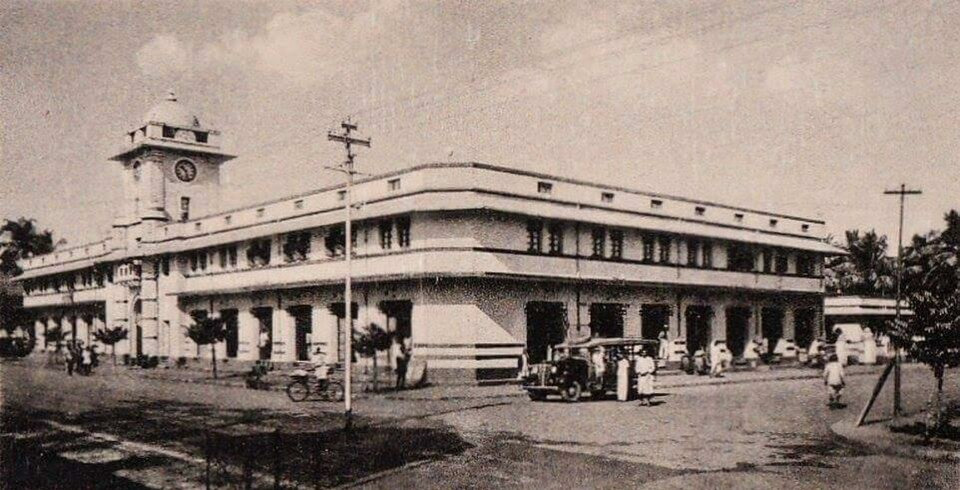What gives hope is the tiny, limited number of young people who take an interest in their past, and care about it deeply. In them, lies our hope

Once every few months, a youngster will come by, and start quizzing me about Goa, its history, its culture, music or whatever. Not that one has qualifications in such fields. It's just that my own search to understand this complex place called Goa predates theirs. So, it might make sense to share notes, and why not.
Not that I mind this at all. In a sense, it comes as a huge relief. It is certainly nice to know that an interest in understanding ourself, who we are as a people, what our history is... is still alive in some spaces at least.
Goa is notorious for forgetting (or even deliberately disowning) its own past. We either don't think it's important. Or we have so many misgivings about our own history. Sometimes we think that we ought to be ashamed of it.
But we can't turn the clock back. We can't rewrite history, even if we'd want to. (Should we?) Our past is a mix of the good and the bad, the pleasant and the not-so-unpleasant. If we could accept that, then we would not want to hide from, rewrite or disown the colourful history of a tiny region.
One could argue that much of this stems from a misunderstanding of Goa's history in proper context.
Recently, an online discussion came up over photography in the Goa of the yesteryears. Musician-film maker-writer Vince Costa has penned an interesting essay on photography in Goa. It covers the attempts to document stories in visual form, and to trace pictures from the past.
What came up in one thread of the discussion was why so few photos remain from the Goa of the yesteryears, this making so little visual storytelling possible.
One argument is that few people had cameras in the past, most photographs were taken at small commercial studios in urban areas, and the studios were not meant to be archives. While this makes for a good (and almost convincing argument), it leaves a lot of questions unanswered.
Unfortunately, the problem is deeper than that. In Goa, libraries, school record rooms, law courts (in recent times) were also never meant to be archives. At the rate we're going, even the first archive in Asia is likely to cease being an archive.
This probably has something to do with a genetic flaw suffered by Goans in particular, and Indians and South Asians in general. We fail to see the importance of preserving history.
Recently, the Portuguese scholar Rosa Maria Perez curated, in Lisbon, the work of the Goan photographer, Krishna Navelcar, also known as Ganesh. Her exhibition was titled 'Foto Arte Ganesh: Goa, Photography and Memory'. It contains many little noticed images from decades back.
As the exhibition describes itself: "[It] features photographs that capture key moments in Goa's history, from the end of Portuguese rule to the social and political transformations that shaped modern Goa. The exhibition aims to pay tribute to Goa's diversity and complexity through a multidisciplinary approach, combining visual and written materials."
So, how was it possible for Foto Arte Ganesh's work to get treated with value and to surface via Lisbon, but not become visible earlier in Goa itself? Likewise, some photos of Souza-Paul keep surfacing occasionally in the West, including in the US, but have all but vanished in Goa itself.
Goa does not have a public archive or museum dedicated to photography. True. It does not have a public archive or museum dedicated to most things. This is what happens when a people don't care for their history, or are confused about it. The early archives, libraries, or printing presses set up here were colonial initiatives. The trend to do the same does not seem to have caught on locally. Sad, but true.
All this might change if people saw money in it... otherwise, nobody cares. There was a time when one gullibly believed people didn't click photos, preserve and share the same, because they didn't have access to cameras.
But before we get caught up in the negative side of the story alone, what gives hope is the tiny, limited number of young people who take an interest in their past, and care about it deeply. In them, lies our hope.
They may disagree with certain perspectives, or challenge what their elder generation tells them. That doesn't matter. In fact, it could lead to some creative sparks.
What is important though is that there should be an open mind to accept various points of view. We should not seek to block out perspectives only on grounds of sectarianism or hyper-nationalism.
One young student whom I encountered, in his early thirties, mentioned that the SSC exam had just seven marks devoted to the history of Goa in its portion when he sat for the exams. That would make the subject something totally ignorable, and many students might opt to do just that.
Inspite of all this, there is a counter trend. It is fascinating when young people want to know things about the past. Why did certain things happen, what were authors (who are no longer around) like, or what was the 'back story' behind a particular book?
Their curiosity is the trajectory that will ensure the continuity of memory, and stories. It might also change our understanding and perception.
A note of caution though: while taking forward such memories, we are duty bound to give credit to those who created such work. The temptation is strong among 'curators' of today to take credit for someone else's work. Or to inadequately give credit to those who put in all the tough work and sweat. That too would be unfair.